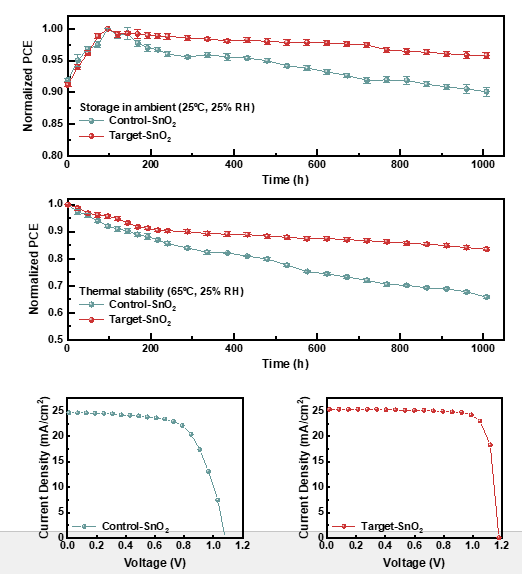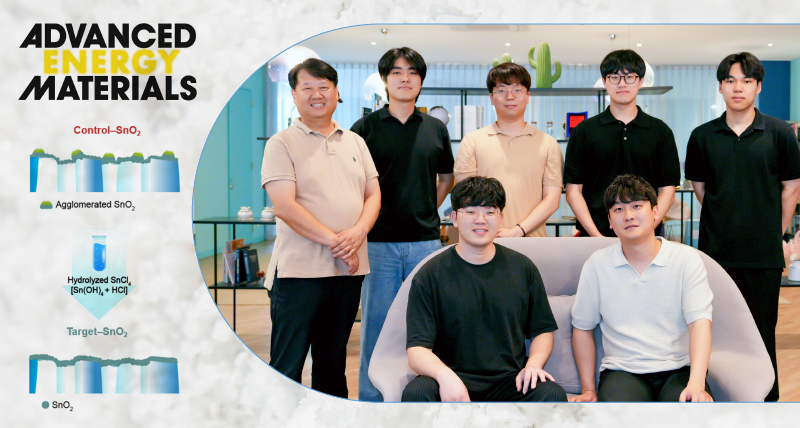The commercialization of perovskite solar cells (PSCs) is anticipated to accelerate through the use of inexpensive tin (IV) chloride (SnCl4).
A research team jointly led by Professor Dong Suk Kim from the Graduate School of Carbon Neutrality at UNIST and Dr. Yimhyun Jo from the Korea Institute of Energy Research (KIER) has significantly enhanced the stability of PSCs. By applying IV chloride to a layer of tin oxide, the team has improved the stability of these solar cells.
To achieve high efficiency in PSCs, it is crucial to manage surface defects in the electron transport layer (ETL)—a thin film that facilitates the efficient extraction and transport of electrons. Such defects greatly influence both the stability and efficiency of PSCs.

Figure 1. Schematic illustration of the SnCl4 treatment process applied to the SnO2 ETL prepared via the CBD method.
The research team dissolved IV SnCl4 in water and applied it to the oxide layer. This process has resulted in the complete oxidation of the upper layer of tin oxide and facilitated recrystallization, leading to enhanced electron mobility.

Figure 2. (Top) Storage stability of the PSCs tested in ambient condition (25 °C, 25% RH), (Center) Thermal stability of the PSCs subjected to thermal stress at 65 °C (25% RH). QSS J–V curves of the (Bottom) control- and d) target-PSCs.
Chemical bath deposition (CBD) is a widely used approach that leverages tin dioxide (SnO2) as the electron transport layer (ETL) in PSCs, achieving exceptional efficiency. However, the deposition of SnO2 can lead to the formation of surface defects, which are inevitable due to the incomplete oxidation of tin. Addressing these defects post-film formation is vital for achieving both high efficiency and long-term stability.
For the successful commercialization of PSCs, it is essential to pass various certification tests. The research team demonstrated the effectiveness of their approach by enhancing the electron transport layer (ETL) and showcasing long-term resistance to heat and ultraviolet exposure.
Professor Kim stated, “Through this study, we succeeded in suppressing the aggregation of tin oxides and improving their crystallinity,” adding, “This technology will play a pivotal role in enhancing the stability of solar cells.”
Researchers Ji Won Song and Dr. Yun Seop Shin noted, “We expect to positively impact the energy industry by simultaneously achieving high efficiency, durability, and low cost with affordable IV SnCl4.”
The findings of this research have been published online in Advanced Energy Materials on July 3, 2024.
Journal Reference
Ji Won Song, Yun Seop Shin, Minjin Kim, et al., “Post-Treated Polycrystalline SnO2 in Perovskite Solar Cells for High Efficiency and Quasi-Steady-State-IV Stability,” Adv. Energy Mater., (2024).












